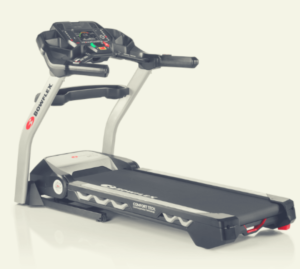If you want to improve your bladder problem, you must check out our five must-try bladder leak solutions for urinary incontinence.
Stop Suffering From Urinary Incontinence
Urinary incontinence is a secret most of us will hide. There are a lot of reasons that cause it. Thankfully, there are also a ton of ways to remedy it and avoid the awkward bladder leak.
Thanks to studies, user reviews, and recommendations from people suffering from urinary incontinence, we were able to come up with this list. We understand that no one solution works for everyone, so we prepared five for you to try on.
You might be suffering from urinary incontinence due to weak pelvic floor muscles, infections, old age, or just because your bladder is weak. If you are at the early stages of your urinary incontinence, you have a higher chance of correcting it.
Unfortunately, urinary incontinence affects females as twice as much as males. Women are more susceptible as they experience pregnancy, childbirth, and menopause.
Now, let us get to know more about these five “must try” to check which of these solutions will work perfectly for you.
Kegel Exercise
Kegel Exercise is a specific type of routine where you tighten and contract your pelvic floor muscles. You must maintain it for a few seconds, then just repeat it multiple times.
What makes it great is you can do it anytime, anywhere.
Studies showed that Kegel Exercise can prevent and control urinary incontinence. It basically strengthens your pelvic floor muscles, which support your bladder.
As for the actual routine, there is no difference between the Kegel Exercise done by men and women. To start, you must ensure your bladder is empty. Then, find a place to sit or lie down.
Once comfortable, tighten your pelvic floor muscles for at least three to five seconds. Then, you may relax the muscles. Proceed to repeat the steps at least three times. Do it every morning, afternoon, and evening.
You can start seeing results after 12 weeks of consistent Kegel Exercise or even earlier!
Medication
There are instances that exercises might not be enough to improve your urinary incontinence. So, medicine might be a great addition to it.
It is highly recommended to pair your medications with other routines and techniques for long-term effects. There are a lot of medications available in the market, depending on your need.
So, here is a list of medication and their benefits for you to weigh which will work for you.
Anticholinergics
The first one on our list is Anticholinergics. It helps to calm your overactive bladder, lessening the possibility of bladder leaks. To ensure you receive a positive result, use it consistently for 12 weeks.
However, some new Anticholinergics drugs show to reduce symptoms after two weeks of use. Unfortunately, this medication is not an over-the-counter one.
Your doctor might need to conduct a thorough exam to determine if this is the appropriate medication for you.
Mirabegron
The second medication on our list is Mirabegron, which only works for certain types of urinary incontinence. It works by relaxing your bladder muscle and can potentially increase your capability to hold more urine.
Mirabegron can also assist in completely emptying your bladder with urine. Similar to Anticholinergics, Mirabegron requires a doctor’s prescription.
This medication will usually work around four to eight hours after intake. However, it might take four to eight weeks before any noticeable improvements can be seen. So, consistent use of this medication is recommended.
Topical Estrogen
The last medication on our list is Estrogen. A lot of older women experience urinary incontinence once they are in menopause. There will be a drop in estrogen levels in their body, weakening the supportive tissues around the bladder.
To ease the problem, a low dose of topical Estrogen can help. It comes in a variety of forms, such as vaginal cream, patch, or ring. However, this is not safe for people who have a history of breast cancer and uterine cancer.
At the same time, topical Estrogen should not be confused with oral Estrogen. The latter might complicate your urinary incontinence.
Side Effects of These Medications
If you use this medication properly, you will not suffer any serious side effects. Though, the first two medications have common side effects.
Anticholinergics users can experience dryness in their mouth and constipation. While for Mirabegron, users might suffer from headaches, nausea, and irregular bowel movement.
Your medical practitioner can provide remedies to ease the following side effects.
Surgery
Surgery can be a drastic option for others. However, this is a recommended solution if you are past the early stage of urinary incontinence or suffering from serious bladder leakage.
Artificial Sphincter
The first procedure you should take into consideration is Artificial Sphincter. Essentially, an Artificial Sphincter or Valve is inserted to manage the flow of urine from your bladder to your urethra.
It is more common for males to avail of this surgery. Doctors usually recommend Artificial Sphincter for men who just undergo prostate surgery.
However, since there is a rise in women wanting to treat their urinary incontinence, Artificial Urinary Sphincter surgery for women increased.
There are no side effects to this procedure, except for potential infection and erosion if not well kept.
Sling Procedure
The second procedure you should look into is Sling Procedure. Doctors will insert a mesh or human tissue under the neck of your bladder, supporting your urethra from urine leaking.
It is a light procedure that usually takes 30 minutes to finish. Patients are encouraged to maintain it with Kegel Exercises and apply low topical Estrogen.
Some side effects reported by patients are having a hard time peeing, urinary tract infections (UTIs), and painful sexual intercourse.
Colposuspension
And the last procedure is Colposuspension. It involves placing stitches on either side of the urethra and tying them to supporting ligaments. It will then elevate the vagina.
The long-term success rate of this procedure is 85%. Unfortunately, there is a chance that the Colposuspension might not be successful or can worsen the existing condition.
Medical Devices
Medical devices are ideal if your condition is not extreme enough to require surgery but might be serious for medication and exercise. However, most of these medical devices are for women’s urinary incontinence.
Urethral Inserts
The most common is the Urethral Inserts. It is a self-administered medical device that you gently insert inside your genitalia. There are Urethral Inserts available for men and women.
These inserts must be removed before peeing as it is technically block everything, not only bladder leakage.
Unfortunately, Urethral Inserts can be uncomfortable. Worse, there are chances you might experience infection, abrasion, and irritation.
So, it is not ideal to wear them for a long period. You might want to use it during the time you need to go out.
Pessary
The next medical device is Pessary. You insert it inside your genitalia, which will support your bladder, vagina, uterus, and rectum.
People with pelvic organ prolapse usually avail of this medical device. Unlike Urethral Inserts, Pessary is comfortable and soft to use. It does not have serious side effects besides occasional vaginal irritation and extra discharge.
Botox
The third medical device on our list is Botox. Although popularly known for facial cosmetic procedures, Botox is effective in controlling your bladder leakage.
Research shows that its success rate is around 70-80%. You might start noticing results two weeks after the procedure. It is recommended that you set up a six-month re-treatment plan to ensure the effects last longer.
However, if the symptoms of urinary incontinence start to show, consult your practitioner. You can have a re-treatment, provided there has been a lapse of 12 weeks between your next treatment from your first.
Radiofrequency Therapy
Last on our list is Radiofrequency Therapy. It is different from surgery as it is not an invasive process. Instead, the tissues in your lower urinary tract are heated using nonablative levels of RF energy.
It will stabilize and contract your endopelvic fascia, strengthening your urethra and bladder neck support. Radiofrequency Therapy might be the safest medical advice as it does not have any side effects.
Absorbent Pads
Absorbent Pads are the safest option out there. It is great for people scared of surgery and medical devices. It offers support while you strengthen your pelvic floor muscles with Kegel Exercise and take your supplements.
It should not be confused with adult diapers, although they offer the same result. The latter are bulkier and more expensive. It can be uncomfortable for daily use and can be noticeable under your clothes.
It makes adult diapers not ideal for people working or studying. Absorbent Pads tend to be thinner and smaller. It can look bulky on fitted clothes. So, it is recommended to size up, especially on jeans.
Absorbent Pads are also cheaper than adult diapers. You can use it for at least three to four hours a day. If this is an issue for you, there are choices when picking your Absorbent Pads.
There are reusable Absorbent Pads that look like regular napkins. You can just toss them on your washer when it needs cleaning.
To wrap it up…
There is no one bladder leak solution for your urinary incontinence. Make sure to try the ones you are comfortable with and mix the following to optimize the results.






